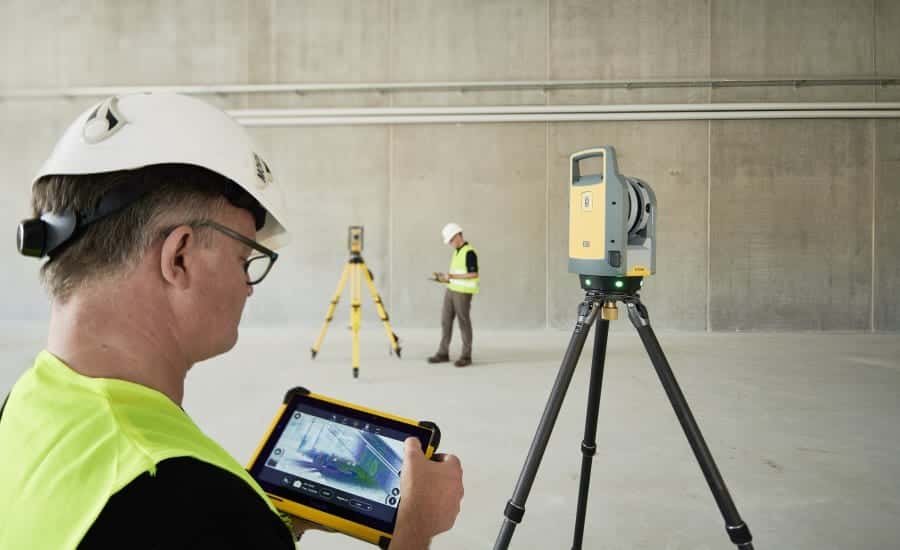In the construction industry, accuracy, precision, and efficiency are essential for ensuring successful project completion. To achieve these objectives, the industry has embraced various technological advancements. One such development is 3D scanning, which has revolutionized the way construction projects are planned, designed, and executed. In this article, we will explore what 3D scanning is, its applications, benefits, and limitations, and how it benefits the construction industry.
Understanding 3D Scanning
What is 3D Scanning?
3D scanning is the process of capturing the shape, size, and geometry of an object or a physical environment using specialized hardware and software. The data captured is used to create a digital 3D model that can be used for various purposes, such as design, inspection, and documentation.
Types of 3D Scanners
There are two primary types of 3D scanners: contact and non-contact scanners. Contact scanners use physical probes to measure the surface of an object, while non-contact scanners use laser or light-based sensors to capture data from the surface of an object.
How 3D Scanners Work
The 3D scanning process involves three basic steps: scanning, processing, and visualization. During scanning, the scanner emits light or laser beams to capture data points from the object’s surface. The captured data is then processed using specialized software, which converts it into a digital 3D model. Finally, the digital model is visualized on a computer screen or other devices.
Benefits of 3D Scanning
3D scanning offers several benefits, including improved accuracy and precision, reduced project costs and timelines, enhanced collaboration and communication, and increased safety and risk mitigation.
Application of 3D Scanning in Construction
Pre-construction planning and design
3D scanning is used in pre-construction planning and design to capture the existing site conditions, including the topography, infrastructure, and existing structures. This data is used to create accurate and precise design models that can be used to identify potential issues and improve the design.
Quality control and inspections
3D scanning is also used in quality control and inspections to ensure that the construction process meets the design specifications. It allows for precise measurements and comparisons between the design and the actual construction, making it easier to identify and correct any discrepancies.
Building information modeling (BIM)
3D scanning is an essential tool for creating Building Information Models (BIM). BIM is a digital representation of a building that contains all its physical and functional attributes. BIM models help in project coordination, clash detection, and communication between the various stakeholders involved in a construction project.
Construction progress monitoring and documentation
3D scanning is also used to monitor construction progress and document the construction process. It provides accurate and detailed documentation of the construction site, making it easier to track progress and identify any issues that may arise during construction.
Retrofitting and renovations
3D scanning is useful for retrofitting and renovations. It helps in capturing the existing conditions of the structure accurately and creates a detailed 3D model that can be used for designing and planning the retrofit or renovation project.
Advantages of 3D Scanning in Construction
Accuracy and Precision:
3D scanning offers a high level of accuracy and precision, which is essential in the construction industry. It ensures that the design is accurate and that the construction process meets the design specifications, reducing the risk of errors and rework.
Cost and Time Savings:
By providing accurate and precise data, 3D scanning can help reduce project costs and timelines. It can identify potential issues early on, reducing the need for costly and time-consuming rework.
Improved Communication and Collaboration:
3D scanning facilitates better communication and collaboration between the various stakeholders involved in a construction project. It provides a common platform for all stakeholders to work from, reducing miscommunication and misunderstandings.
Safety and Risk Mitigation:
3D scanning improves safety on construction sites by identifying potential hazards and risks early on in the project. It also provides accurate and detailed documentation that can be used in case of any accidents or disputes.
Environmental Sustainability:
3D scanning reduces the need for physical measurements, which can be time-consuming and resource-intensive. It also reduces waste by identifying potential issues early on, reducing the need for rework and material waste.
Challenges and Limitations of 3D Scanning in Construction
High Cost of Equipment and Software:
The cost of 3D scanning equipment and software can be high, making it difficult for small construction companies to adopt this technology.
Technical Expertise and Training Required:
3D scanning requires specialized technical expertise and training, which can be a barrier for some construction professionals.
Data Processing and Integration:
The large amount of data generated by 3D scanning can be challenging to process and integrate into existing construction workflows and processes.
Privacy and Security Concerns:
The use of 3D scanning raises concerns about privacy and security, as it involves the capture of sensitive data about buildings and their occupants.
Legal and Ethical Considerations:
The use of 3D scanning raises legal and ethical considerations, such as intellectual property rights, data ownership, and liability.
Conclusion:
In conclusion, 3D scanning is an innovative technology that is transforming the construction industry. It offers several benefits, including improved accuracy and precision, reduced project costs and timelines, enhanced collaboration and communication, and increased safety and risk mitigation. However, it also presents several challenges and limitations that need to be addressed to ensure its widespread adoption in the industry. As the technology continues to evolve, it is essential for construction professionals to stay up-to-date with the latest developments and incorporate 3D scanning into their workflows to stay competitive and meet the demands of their clients.
